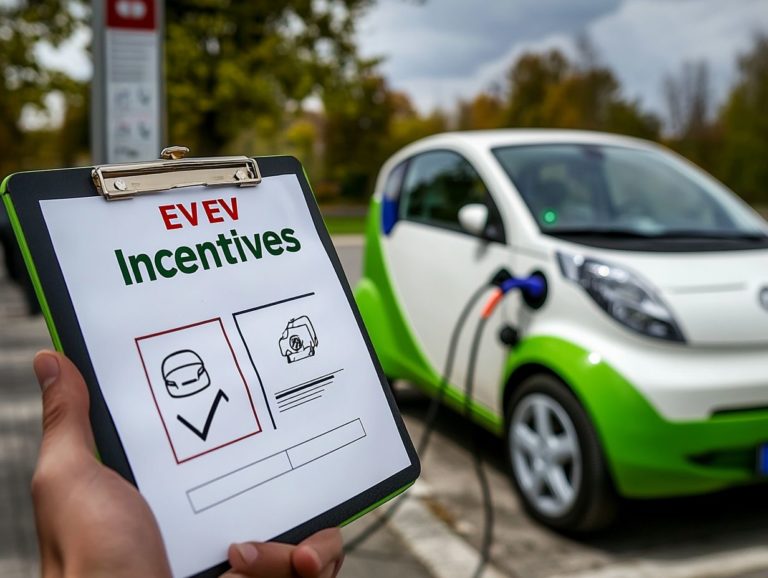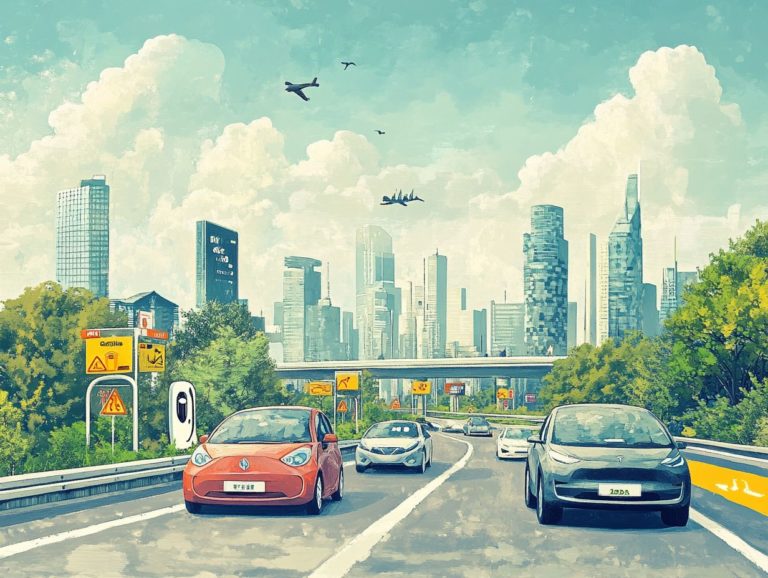Breaking Down EV Market Share by Region in 2024
The electric vehicle (EV) market is booming! It’s driven by growing environmental concerns, technological advancements, and supportive government policies.
This overview delves into the current state of the EV landscape. We will define the various types of vehicles and explore market dynamics, including regional shares as of 2020 and predictions for 2024.
We will also address the challenges and opportunities that arise within this evolving market. This includes considering implications for both traditional automotive manufacturers and new entrants.
Step into the future of transportation as we navigate this exciting journey together.
Contents
- Key Takeaways:
- Overview of the Electric Vehicle Market
- Current State of the Global EV Market
- Factors Driving the Growth of EV Market
- Predictions for EV Market Share in 2024
- Challenges and Opportunities for the EV Market
- Implications for the Automotive Industry
- Frequently Asked Questions
- What is the projected EV market share by region in 2024?
- Why is Europe expected to have the highest EV market share in 2024?
- How does China’s EV market share compare to other regions in 2024?
- What factors are driving the growth of EV market share in North America?
- Will there be significant differences in EV market share by region in 2024 compared to current market shares?
- What impact will regional differences in market share have on the global EV market in 2024?
Key Takeaways:
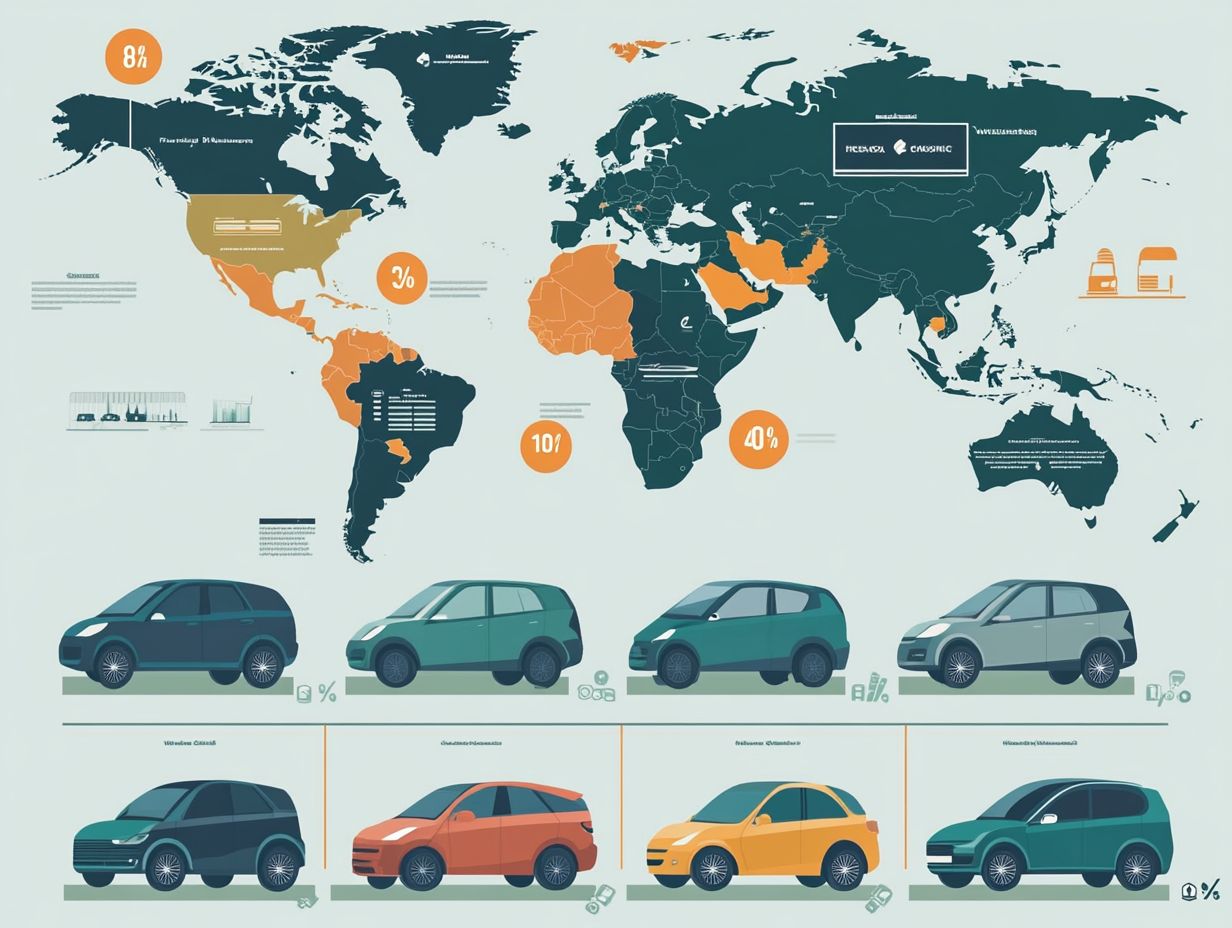
- By 2024, the global EV market will grow significantly, with Asia Pacific leading in market share due to supportive government policies.
- Countries are focusing on reducing emissions and promoting sustainable transport, driving the EV market.
- Traditional car makers and new entrants will face both challenges and opportunities as the EV market expands.
Overview of the Electric Vehicle Market
The electric vehicle (EV) market is evolving at breakneck speed. This reflects a substantial surge in consumer interest and sales, especially among fully-electric vehicles.
These EVs are making a significant impact on the automotive industry as governments worldwide advocate for emissions reduction and the shift towards cleaner transportation.
In Q2 2024, impressive performances will emerge from major players like Tesla, Ford, General Motors, Hyundai Motor Company, and Kia. They all contribute to a dynamic landscape shaped by global market trends and enticing EV adoption incentives.
Definition and Types of Electric Vehicles
Electric vehicles (EVs) present an impressive spectrum of choices. They are primarily categorized into battery electric vehicles (BEVs) and hybrids, each bringing distinct advantages in performance and environmental sustainability.
BEVs run exclusively on electricity, powered by rechargeable batteries. They deliver zero tailpipe emissions and often outperform traditional combustion engines in terms of acceleration.
On the other hand, hybrids merge the efficiency of an internal combustion engine with the power of an electric motor. This offers enhanced fuel efficiency and an extended driving range.
Grasping the technology behind these vehicles is crucial. They employ advanced battery management systems, regenerative braking (a system that captures energy when braking to recharge the battery), and smart charging solutions to optimize efficiency.
The advantages of embracing electric vehicles are numerous. These include lower operating costs, diminished greenhouse gas emissions, and attractive government incentives.
With a variety of models now on the market catering to diverse consumer preferences from compact cars to luxurious SUVs EVs are becoming an increasingly appealing choice for a broad audience.
Current State of the Global EV Market
The current landscape of the global EV market reveals a remarkable surge in electric vehicle registrations. Leading manufacturers such as Tesla, Ford, and General Motors are making substantial contributions, significantly influencing overall market share and shaping automotive trends in an increasingly competitive environment.
Join us as we embrace a cleaner, smarter transportation future!
In 2020, you saw the electric vehicle market displaying diverse market shares across various regions. The U.S. EV market experienced significant growth due to rising demand and supportive government policies.
This remarkable shift in adoption stems from several factors, including increased consumer awareness about sustainability and advancements in battery technology.
The development of charging infrastructure has also played a crucial role. European nations such as Norway and Germany showcased robust market shares, driven by stringent emissions regulations and incentives promoting clean energy.
Meanwhile, in Asia especially in China substantial investments in electric vehicle production and supportive local policies played a key role. These regional dynamics highlight the evolving automotive landscape, where consumers are increasingly leaning toward greener alternatives.
Factors Driving the Growth of EV Market

The electric vehicle market’s growth is significantly propelled by a combination of growing environmental concerns, favorable government policies, and an increase in EV subsidies. Together, these factors create strong momentum that drives sales growth for electric cars and expands their inventory within the automotive industry.
Environmental Concerns and Government Policies
Environmental concerns have taken center stage, prompting governments around the globe to implement policies designed for emissions reduction. This includes clean vehicle tax credits and various electric vehicle incentives aimed at boosting your adoption of EVs.
These initiatives are crucial in addressing the escalating climate crisis as transportation remains one of the largest contributors to greenhouse gas emissions.
Many urban areas are grappling with deteriorating air quality and health impacts linked to traditional combustion engine, highlighting the urgent need for you to transition to cleaner alternatives.
In response, policymakers are enhancing EV infrastructure, urging manufacturers to invest in sustainable technologies, and providing you with financial support to facilitate this transition.
Global commitments to carbon neutrality are crafting frameworks that align regional legislation with broader environmental goals. This makes electric vehicles not just a choice for you, but a necessary shift toward future sustainability.
Predictions for the EV market share in 2024 showcase an impressive growth trajectory, with various regions poised to see heightened sales projections and an expanding array of EV models entering the market.
This evolution is set to fundamentally reshape the automotive industry landscape, presenting exciting opportunities for both consumers and manufacturers alike.
The anticipated growth in the electric vehicle market varies dramatically by region, reflecting distinct local demand dynamics, technological advancements, and evolving automotive market trends that shape market share.
In Europe, for instance, stringent emission regulations and generous government incentives are propelling rapid adoption.
Meanwhile, the Asia-Pacific region thrives on increasing manufacturing capabilities and a rising consumer interest in sustainable transport.
North America presents a mixed bag of growth rates, swayed by infrastructure development and shifting public attitudes toward eco-friendly vehicles.
Factors such as advancements in battery technology, the expansion of charging infrastructure, and climbing fuel prices further contribute to these regional disparities. Grasping these underlying influences is essential for anyone looking to navigate this dynamic landscape effectively.
Challenges and Opportunities for the EV Market
The electric vehicle market presents you with a landscape filled with challenges, such as intense competition and the crucial need for robust EV charging infrastructure.
However, these hurdles also open the door to substantial growth opportunities, especially as demand for electric vehicles continues to soar.
Challenges and Opportunities in the EV Market
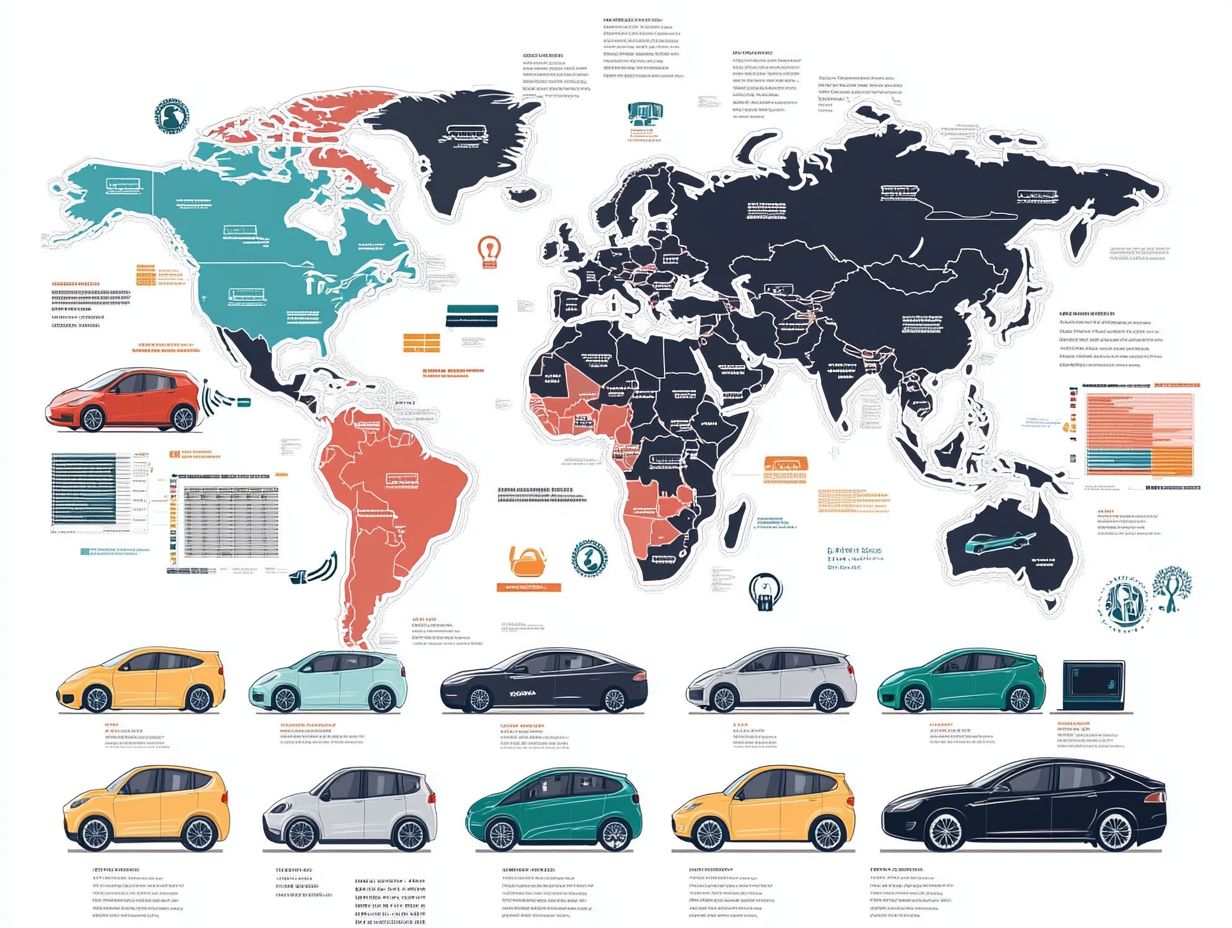
To achieve sustainable growth in the electric vehicle sector, you must navigate a landscape filled with obstacles. These include limited EV charging infrastructure and ever-changing market dynamics that influence consumer preferences and adoption rates.
Regulatory hurdles complicate these challenges, varying greatly across regions. This affects both the pace of deployment and the investment needed for comprehensive charging networks. There’s immense potential for expansion through innovative solutions, such as faster charging technologies and vehicle-to-grid systems. These advancements can significantly enhance grid reliability.
By forging strategic partnerships among automakers, energy providers, and tech companies, you can cultivate a collaborative environment that effectively addresses these gaps. This will ensure a more robust infrastructure that adapts to the evolving needs of consumers while meeting regulatory requirements.
Implications for the Automotive Industry
The rising prominence of electric vehicles is transforming the automotive landscape. Established car manufacturers are recalibrating their strategies to keep up.
This shift opens doors for new entrants into the market and is fueled by significant advancements in EV technology and changing market dynamics.
Impact on Traditional Car Manufacturers and New Players in the Market
Traditional car manufacturers are under pressure from the rapid rise of electric vehicles. They find themselves in fierce competition with newcomers who are harnessing new electric vehicle technology and innovative business models to capture market share.
To remain relevant, these established companies are reassessing their production strategies. They’re under pressure to innovate swiftly to meet evolving consumer expectations. The push for sustainable practices has led them to adopt advanced manufacturing techniques and seek partnerships with tech firms.
Newcomers are shaking things up with agile operations and digital-first strategies, compelling traditional players to adapt or risk becoming obsolete. This competitive environment fosters a culture of innovation, urging every stakeholder to differentiate their offerings and intensifying the race toward electrification.
Frequently Asked Questions
According to reference data, the global EV market is expected to reach 30% market share by 2024. Europe is projected to have the highest share at 44%, followed by China at 38% and North America at 26%.
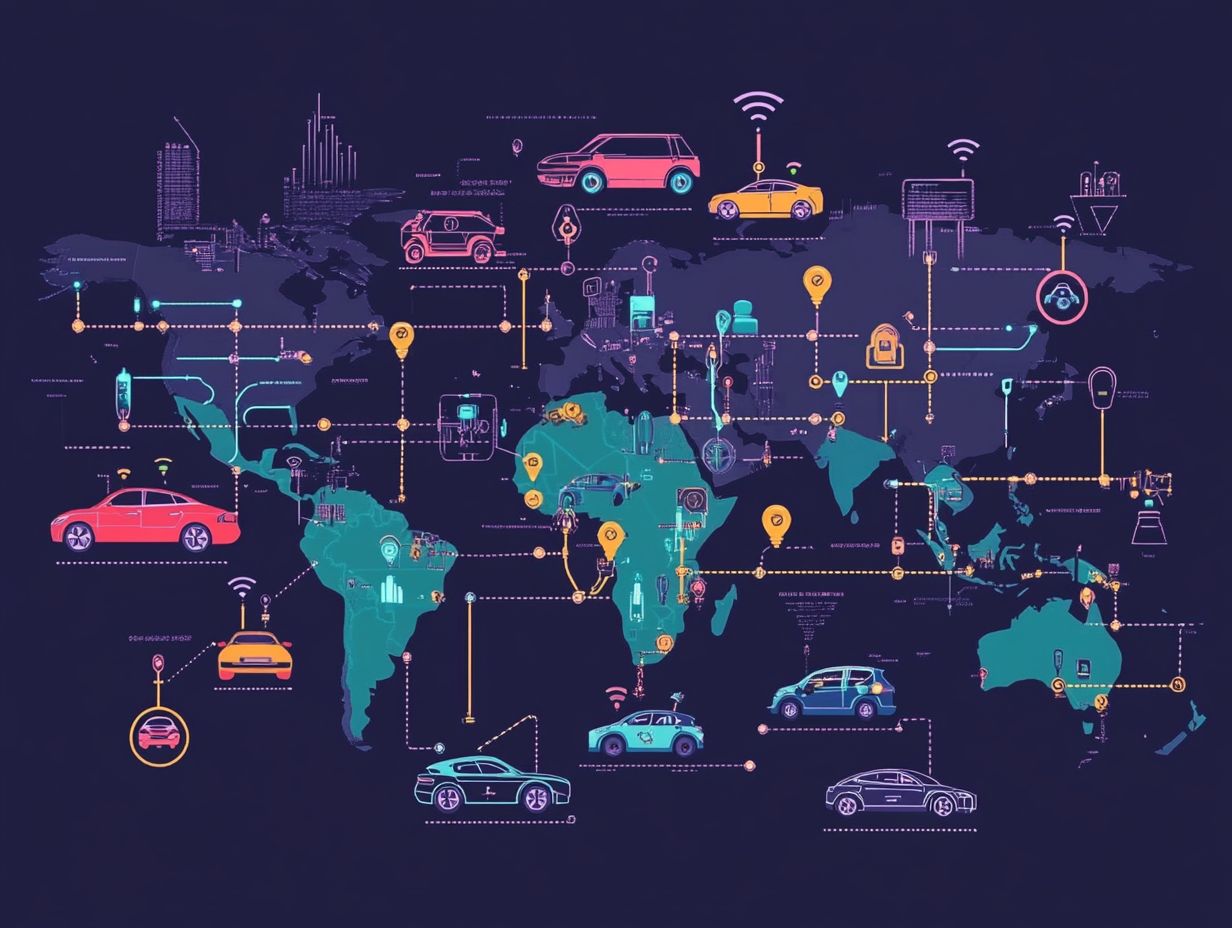
Europe is proactive in implementing policies and regulations that encourage electric vehicle adoption. These include emissions targets and incentives for EV purchases, creating a favorable environment for EV sales.
China is currently the largest market for electric vehicles, with strong government support for electrification and a large domestic market. In 2024, it is expected to maintain its position with a projected 38% share.
In North America, the increasing availability of affordable EV models, government incentives, and efforts to build charging infrastructure are major contributors to the projected 26% market share in 2024.
Yes, significant changes are expected in EV market share by region in 2024. For example, Europe is projected to see a 44% market share, up from 26% currently, while China’s expected market share is 38%, compared to 17% now. To understand these shifts better, refer to the insights on global EV sales trends.
Stay tuned for more insights on the electric vehicle revolution!
The year 2024 is pivotal for the global EV market. Insights into regional differences can reveal exciting opportunities for growth!
Regional differences in EV market share in 2024 will drive growth in the global EV market. For insights on how different regions stack up, check out how the electric vehicle market compares globally, as varying levels of government support and consumer attitudes play a crucial role.
Market conditions also play a crucial role. These regional factors will significantly shape the future of the industry.


